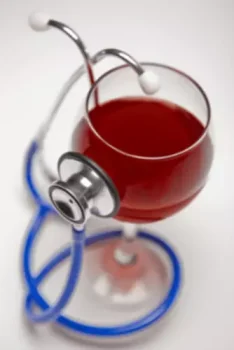If you make a pledge to stay sober for a week but you have a drink or two at happy hour with friends, that doesn’t mean you’re an alcoholic. If you’re capable of drinking responsibly, you probably aren’t an alcoholic. Alcohol research should also more actively acknowledge new social contexts among youth culture. A better understanding of the influence online social networking sites and new media have on alcohol use is particularly important among adolescent populations, and this should be explored more fully in future studies. Many people with alcohol problems and their family members find that participating in support groups is an essential part of coping with the disease, preventing or dealing with relapses, and staying sober. Residential treatment programs typically include licensed alcohol and drug counselors, social workers, nurses, doctors, and others with expertise and experience in treating alcohol use disorder.
Warning Signs Social Drinking May Be Turning into Problem Drinking

The distinction between ‘low-risk drinking’ and ‘harmful drinking’ is crucial to understanding and maintaining a healthy relationship with alcohol. If you are a recovering addict you may be wondering, “can an alcoholic have an occasional drink? ” Even though social drinking is considered a low-risk activity, any moderate drinking is extremely dangerous for alcoholics.
Strategies to Mitigate the Risks of Social Drinking

She repeatedly related to doctors that she was a teetotaler, as did her husband. Yet each time she wound up at the hospital, she was diagnosed with alcohol intoxication. On one visit, an emergency room doctor even certified her under Ontario’s social drinking and drinking problem Mental Health Act to be involuntarily kept at the hospital until a psychiatric assessment could take place. It doesn’t matter how much you drink – the risk to the drinker’s health starts from the first drop of any alcoholic beverage.
Aultman Wait Times
In a study that should have done more to reposition the field, Pliner and Cappell (1974) contrasted the effects of alcohol while consumed alone to those observed while in groups. Participants drinking in groups reported and displayed changes that were primarily emotional (e.g., feeling less unhappy), while those consuming alcohol in isolation reported primarily physiological changes (e.g., feeling dizzier). Subsequent research (e.g., Doty & de Wit, 1995; Kirchner, Sayette, Cohn, Moreland, & Levine, 2006; Kirkpatrick & de Wit, 2013; Samson & Fromme, 1984) also supported the view that testing alcohol’s effects requires a social context. Fairbairn and Sayette (2014) recently outlined a social attributional framework for examining the impact of alcohol on social anxiety, and on emotion more generally. This framework builds on the work of Curtin, Hull and their colleagues to suggest that alcohol will enhance mood when negative outcomes are perceived to be unstable and/or self-relevant (e.g., meeting strangers at a bar). While nearly all naïve-participant studies reveal positive effects of alcohol on emotion, only a small minority of confederate studies find evidence of significant alcohol-related emotional enhancement.
- While most US adults do not experience problems related to their alcohol use, 5.8% have an alcohol use disorder (AUD) (SAMHSA, 2018), defined as a “problematic pattern of alcohol use leading to clinically significant impairment or distress” (DSM-5; American Psychiatric Association, 2013).
- Individual differences in the socially reinforcing effects of alcohol also may relate to genetic makeup, and testing alcohol’s effects in a social context may be a powerful approach to uncover genetic vulnerability to alcoholism (Fromme et al., 2004; Volkow & Li, 2004).
- There are different types of alcohol addiction treatment programs available today, including medication-assisted treatment.
- Finally, future research directions and clinical implications are considered.
- Certainly research is needed to continue to examine additional mediators and moderators.
- The rehabilitation program will likely include both behavioral and pharmaceutical therapy.
Social, occasional, casual, recreational, and moderate drinking: Are they all the same?
Getting Help for Alcohol Addiction
Preparation for quitting alcohol

The Irrationality of Alcoholics Anonymous
- Kwate and Meyer (2009) found a correlation between problem drinking among African-American women and exposure to alcohol advertisements, suggesting that as ad exposure increased, so did alcohol consumption.
- Although traditionally perceived as a “masculine” behavior, binge drinking is now more acceptable among women in certain cultures that foster more balanced gender roles (Lyons and Willott 2008).
- On the other hand, young adults exhibit significant cohort effects, with current generations showing a later onset and peak of alcohol use compared to previous generations.
- It involves people coming together to enjoy drinks in a social setting, such as a bar, restaurant, party, or gathering, primarily for social purposes.
- Worldwide, 3.3 million deaths were attributed to alcohol misuse in 2012 (World Health Organization 2014).
- Moderate drinking means consuming one drink per day for women and two drinks per day for men, according to the National Institute on Alcohol Abuse and Alcoholism.